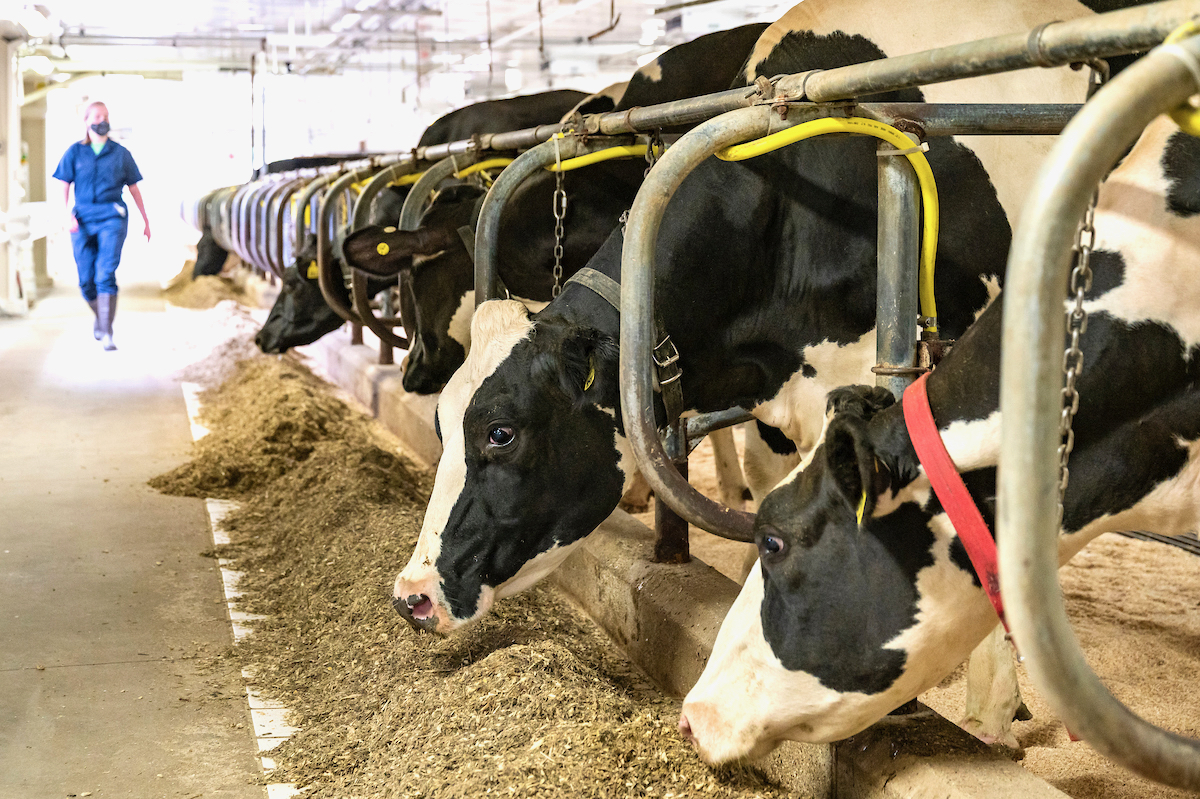Editor’s note: The following story is published with permission from the University of Wisconsin-Madison.
By Elise Mahon
On March 25, 2024, the US Department of Agriculture (USDA) announced that a highly pathogenic strain of avian influenza had been detected in dairy herds in Texas and Kansas. Additional cases were detected four days later in a dairy herd in Michigan that received cows from Texas. No cases have been detected in Wisconsin and there are no restrictions on the movement of animals between states at this time.
Dairy is Wisconsin’s largest agricultural sector, and Keith Poulsen, a University of Wisconsin–Madison expert in zoonotic disease and director of the Wisconsin Veterinary Diagnostic Laboratory, has been working with federal, state and industry partners to understand and monitor the situation.
He stresses there are three main things to know right now:
• Pasteurized milk and cooked meat in all products are safe and there is no reason to believe there are concerns with dairy products.
• The disease seems to be spreading from bird to cow, not cow to cow, though investigations are underway to determine how the disease was spread to the Michigan dairy.
• At this time the disease is not considered a high risk for public health. There has been a confirmed report of a dairy farm worker in Texas with conjunctivitis and other limited reports of flu-like illness that has not, at this point, been confirmed as highly pathogenic avian influenza.
Q and A
In this Q&A, Poulsen shares more about HPAI (also known as bird flu), how it’s spreading and what Wisconsinites should look out for in their herds and products. The interview has been edited for clarity.
What do we know about this sickness and why it’s affecting cows?
Farms have been dealing with increased morbidity in in their dairy cow herds in the panhandle of Texas, southwest Kansas and some of New Mexico for several weeks now. Most recently, there have been reports from a Michigan dairy that received cows from Texas. (The recent USDA announcement followed clinical testing of samples from farms in Texas and Kansas that identified highly pathogenic avian influenza; testing was performed after cows in these states and New Mexico began exhibiting symptoms such as decreased appetite and milk production.)
Migratory birds are bringing this highly pathogenic avian influenza to cows, mostly infecting those that are later in their milk cycle [or are in at least their] second lactation. Infected cows are less active, produce less milk and may be dehydrated. Investigations are currently underway in Michigan to determine if the disease was spread from cow to cow, or if birds remain the cause of spread.
We have been dealing with this strain of HPAI since 2022 and we need this virus to burn out of the environment. We aren’t seeing it impact our domestic poultry flocks in Wisconsin during spring migration as of yet, so that’s good news for our poultry farmers. But other states are, and migration isn’t done yet, so we are watching very closely.
We have a really great multidisciplinary group of veterinarians, industry, state and federal animal health officials continuing to work on the problem. And it’s certainly top priority, because of the importance to our animals’ health and public health.
How might Wisconsinites be affected?
It’s really important for everyone to know that the food supply is safe because a lot of our state, a lot of our families out on farms, they depend on that industry to make a living.
When it’s raining and wet and we see these huge temperature swings back and forth, that’s really challenging for raising young stock. So, farms do send quite a few animals to different, warmer, drier climates [like Texas and Kansas] for them to be raised, and then they return as pregnant heifers that go into the lactating herd.
The important thing to remember is that we aren’t seeing significant illness in those youngstock animals. And remember, we don’t have confirmation that these cows are infecting each other. So, these animals coming back into Wisconsin would be a low risk [of spreading infection].
The downside is, though, when cows take a hit in their milk production and they’re later in lactation, it’s really hard for them to come back into milk. But for the most part, a lot of these cows are coming back and milk slowly.
What are the signs and symptoms that Wisconsinites should watch for in their herds?
One of the best ways that we’re finding sick cows is that their activity is dropping. Just like a person that has the flu, or a run-of-the-mill cold, they don’t eat as much, don’t walk around as much. Like any other performance athlete, once you’re not eating and moving around a lot, you’re probably not going to be performing. So, when they feel kind of crummy, their milk yield will drop.
We also see their milk becomes thicker and more yellow, which is a unique part of the illness in cows.
The normal body temperature of a cow in Wisconsin is about 101.5 Fahrenheit but many of those affected animals have fevers in the 103 to 106 Fahrenheit range. Typically, when we think about flu viruses, we think about diarrhea and things like that, but these sick cows tend to be dehydrated and they tend to have dry, tacky manure.
What should Wisconsinites do if they think their animals may be affected?
People working on dairies, if they see something that meets the case definition of what we’ve been talking about, they should call their herd veterinarian right away.
Then their veterinarian can call the Wisconsin Veterinary Diagnostic Laboratory or Department of Agriculture, Trade and Consumer Protection.
We want to hear about it rather than wait and see, because we want to know early if the virus is in Wisconsin. If we get tests quickly, it also helps us minimize any spread and keep track of if that virus changes.
The earlier we know the better, because the faster we can implement a management change on a farm or share if advice changes for public awareness, and we can minimize spread on a dairy or into a human population.
But remember, we see a very low risk to public health at this point.













